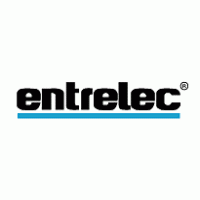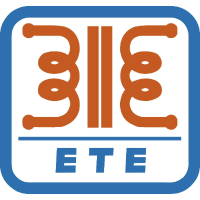We use cookies to make your experience better. To comply with the new e-Privacy directive, we need to ask for your consent to set the cookies. Learn more.
What is ladder logic programming? A quick primer

If your job involves working with Programmable Logic Controllers, you may well have at least heard the phrase “ladder logic programming”. Essentially, ladder logic programming is a graphical programming language widely used in industrial automation for controlling machinery and processes.
It visually mimics the structure of electrical relay logic diagrams, which makes it easy for engineers and technicians to programme and troubleshoot complex control systems. It’s most commonly used to program programmable logic controllers (PLCs), helping to monitor and control automated systems in industries such as manufacturing, food processing, and automotive.
A quick introduction to ladder logic programming
So, let’s cover the essentials quickly. Basically, ladder logic is designed to be simple, intuitive, and accessible, especially for people with an electrical background. As we’ve touched on above, its structure resembles a ladder, with two vertical rails and multiple horizontal rungs. The vertical rails represent the power supply, and the rungs contain the logic conditions or actions. Each rung is evaluated from left to right, just like an electrical circuit, making it easy to understand how the system operates.
A ladder logic diagram is composed of several components: the rails, rungs, contacts, and coils. The contacts are used to represent inputs, such as sensors or switches, while the coils represent outputs, such as motors, lights, or alarms. There are two types of contacts: normally open (NO) and normally closed (NC). A NO contact closes when its associated input condition is met, while an NC contact opens when the input condition is met. By combining these contacts and coils, ladder logic can create complex logical statements to control a wide range of systems.
The top benefits of using ladder logic in industrial settings
At a glance, these include:
- Simple, intuitive programming style
- Easy to understand for electrical engineers
- Reliable and robust for industrial environments
- Flexibility for a wide range of applications
- Quick troubleshooting and diagnostics
- Easily scalable for system expansion
- Real-time control and response
- Minimal risk of programming errors
To explore these in a little more detail, ladder logic programming offers a range of substantial advantages that make it a popular choice in industrial environments. One of the biggest benefits is its simplicity, since the language’s graphical format closely resembles electrical diagrams. This visual layout means that it’s not strictly necessary to have advanced programming skills to understand or implement the system. That means that training times can be reduced, and systems can be set up and modified more quickly.
Ladder logic is also famously reliable. The PLCs that execute ladder logic programs are designed to withstand harsh industrial environments, including extreme temperatures, vibrations, and electrical interference. This durability ensures that the system can run continuously and maintain optimal performance in tough conditions. Plus, because ladder logic is a simple language, that means there’s less room for programming errors, which can be costly and time-consuming to fix.
Another key benefit is the flexibility of ladder logic. It’s suitable for a wide variety of applications, ranging from simple on/off control to more intricate systems with multiple sensors and outputs. This versatility allows it to be used across various industries, whether for controlling a single machine or an entire production line. It also supports both digital and analogue inputs and outputs, making it adaptable to a broad range of processes.
Ladder logic is perfect for real-time control. Since it continuously evaluates inputs and responds immediately, the system can make adjustments in real time, such as controlling the speed of a motor or regulating a temperature. That ability to make quick adjustments often proves crucial in industries where precise control is required to maintain product quality and efficiency.
Finally, ladder logic makes troubleshooting easier. The clear visual representation of the control process enables engineers and technicians to quickly identify any issues in the system. If a fault occurs, the problem can often be traced back to a specific rung in the diagram, simplifying maintenance and reducing downtime.
Five common applications of ladder logic programming
- Conveyor systems
- Assembly lines
- Packaging systems
- Temperature and pressure control
- Water treatment plants
Ladder logic programming is widely used in many industrial applications, from basic machine control to complex, integrated systems. One of its most common uses is in the control of conveyor systems, where it manages the starting, stopping, and speed regulation of conveyors based on input from sensors or switches.
In assembly lines for example, ladder logic coordinates the operation of various machines and tools to ensure efficient production; it can control robotic arms, conveyor belts, and other automated machinery. Similarly, in packaging systems, ladder logic helps regulate the processing, sorting, and packaging of products at each stage.
Ladder logic is also frequently used in temperature and pressure control systems. These systems require precise monitoring and adjustment to maintain the correct conditions for processes such as heating, cooling, or pressure regulation. Ladder logic provides a reliable and straightforward method for controlling these systems. Water treatment plants often rely on ladder logic to manage the filtration and chemical dosing processes, ensuring clean water is produced consistently and efficiently.
That’s all the essentials covered, so should give you a good baseline knowledge when it comes to ladder logic programming! And if you’re looking for programmable logic controllers to apply it to, that’s exactly where we can help here at LED Controls. With more than 20 years of experience to our name, you can explore our full range of programmable logic controllers right here on our site – and all for the very best prices.
Or if you’ve got any questions or need any advice, don’t hesitate to get in touch with our team. You can send us a quick message on our contact form, or give us a call on 01706 242050. We’re always here to help!








































